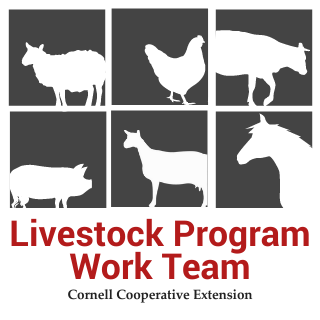Upcoming Events
Northeast Fiber Exchange (NEFX) Farmer Training
Where:
Cornell University, Frank B. Morrison Hall
507 Tower Rd., Ithaca, NY 14853
What: Hudson Valley Textile Project and PRO-LIVESTOCK Small Ruminant Program will be hosting an event for the Northeast Fiber Exchange
Cost: FREE
Attendees will receive a free ASI “Code of Practice” book
Registration Link Here
Questions, please contact Jess Waltemyer at jrk272@cornell.edu or Abby Henderson abby.hvtextileproject@gmail.com
Parasite Issues & Management
for small ruminants
March 5, 2025 at 6:30pm
FREE Zoom Meeting
Featuring guest speaker Jessica Waltemyer, ProLivestock Small Ruminant Extension Specialist
· Common parasite signs and lifecycles
· Five point check
· Treatments and management
· Resources
To Register: Click Here
About Animal Fiber Production in New York
NYS small ruminant fiber producers are primarily small flock farmers, with over 87% of all wool-producing sheep farmers having less than 100 head herds. Besides sheep, there are also goat, alpaca, rabbit, and bison farmers in NYS that also produce fiber, but wool is the most common with over 250,000 lbs. of wool produced in 2017 according to the USDA agricultural census of that same year.
These small flock producers only produce 41% of the wool in NYS indicating the scale of their enterprises. This small scale restricts the availability of markets to which these producers can contribute and increases costs associated with reaching a market forcing these farmers to become creative with their marketing and distribution channels. This creativity appears in their willingness to pursue value-added products and direct marketing which increases the income from their wool but also increases the costs associated with processing their wool as a result of economy of scale and the infrastructure available to these producers.
Markets small flock fiber producers in NYS work in include: direct-to-consumer value-added and artisan markets (e.g. festivals, farmers markets, online sales), wholesale and consignment retail markets, and the commodity market through regional wool pools.
***Much of this information is pulled from “Analyzing Farm Level Practices and Policies for a Financially Viable Sheep Farm Enterprise using System Dynamics: Focus on Fiber Production and Marketing”







